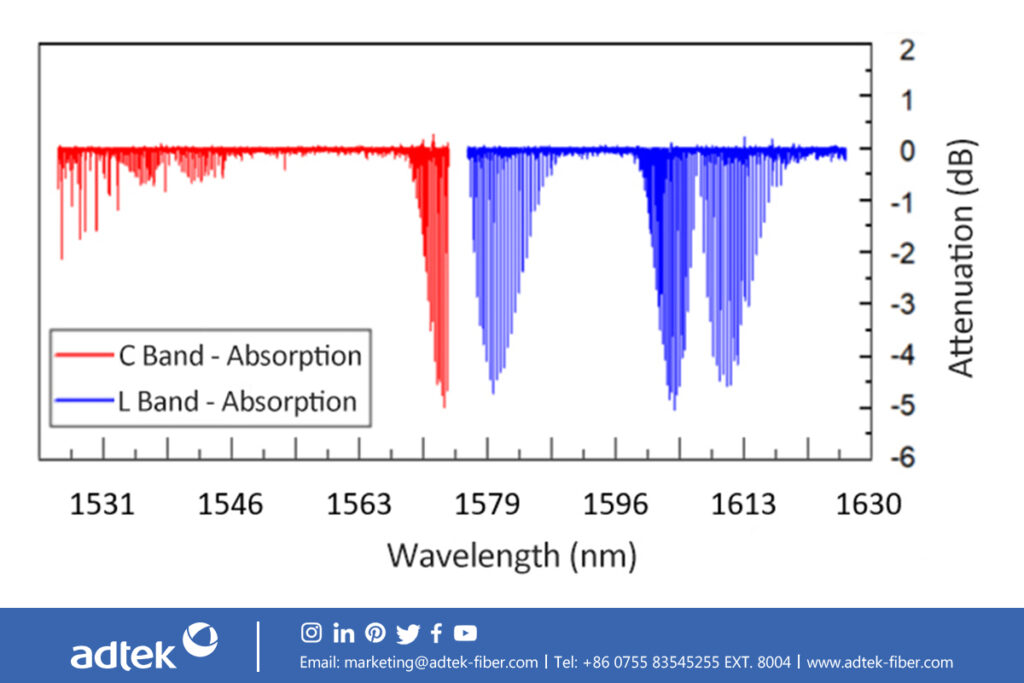
Hollow-core fiber (HCF) presents several compelling advantages over conventional solid-core fibers like G.652.D, including ultra-low latency, high capacity, and reduced attenuation. While the low-latency characteristic is beneficial in specialized scenarios such as high-frequency trading, its impact is often negligible for general applications like video calls. Similarly, the low-attenuation property is most advantageous in long-haul submarine communications, where reducing optical amplifier count is critical. However, for terrestrial backbone networks—where amplifier deployment is relatively easy—the true value of HCF lies in its capacity potential. Although HCF theoretically offers over 10 times the capacity of traditional fiber, its practical application still faces various technical hurdles. Let’s examine the challenges HCF must overcome to fully realize its advantages in terms of bandwidth, spectral efficiency, and multiplexing dimensions.
HCF has the potential for over five times the low-loss bandwidth of conventional fiber. However, current commercial HCF products targeting the C+L band offer only comparable bandwidth due to gas absorption (mainly CO₂) within the hollow core. In long-distance transmissions, this absorption leads to losses of up to 0.5 dB/km in parts of the L band. Though manufacturers are working on mitigating CO₂ absorption and exploring other wavelength bands, doing so may sacrifice compatibility with existing amplifiers and WDM components.
Reducing the wall thickness of the capillary structure (e.g., to 0.5 μm) can improve bandwidth but introduces several complications: (1) increased manufacturing and deployment difficulty, (2) lack of compatible amplifiers, (3) ripple effects from non-uniform attenuation curves, and (4) potential reliability concerns due to thinner structures. As it stands, HCF’s usable bandwidth is roughly on par with solid-core fiber.
Spectral efficiency (SE) is primarily influenced by the signal-to-noise ratio (SNR). Two key factors affect the SNR in HCF systems: input power and fiber attenuation.
Input Power: While G.652.D fiber typically supports a maximum input power of 27 dBm, HCF can theoretically handle up to 37 dBm. However, this comes with safety risks when interfacing with conventional solid-core connectors and tighter bend sensitivity.
Attenuation: Although HCF boasts attenuation as low as 0.05 dB/km, real-world link losses are often ≥0.1 dB/km due to splicing and cable structure complexities. Compared to a G.652.D-based system with 0.2 dB/km loss, HCF systems can reduce link loss by up to 8 dB over 80 km.
When these two improvements are combined (10 dB higher input power + 8 dB lower link loss), SNR can improve by up to 18 dB—translating to a theoretical 3.79× boost in spectral efficiency. In modulation terms, this could mean shifting from QPSK to 128QAM under ideal conditions. However, practical limits like the ~30 dB SNR ceiling of current transceivers will cap this gain.
HCF supports single-core bidirectional transmission due to its extremely low Rayleigh backscattering—over 1,000× lower than solid-core fibers. However, this still requires long-haul feasibility validation.
One major drawback is HCF’s relatively high polarization mode dispersion (PMD), typically 0.4–0.6 ps/km^0.5, compared to ≤0.1 ps/km^0.5 in G.652.D. High PMD affects the use of polarization-division multiplexing in long-distance systems.
Another physical limitation is outer diameter. With HCF cores often 370 μm wide (vs. 250 μm for traditional fiber), the fiber density within a cable is reduced. In some designs, HCF cable core density is <30% of that of solid-core designs, significantly undermining overall system capacity.
In the past 2–3 years, major progress has been made in reducing the attenuation of hollow-core fiber, but fully exploiting its capacity potential will require overcoming key technical barriers:
Wider Bandwidth: Leverage HCF’s low nonlinearity to expand into new wavelength bands.
Higher Input Power: Develop high-power amplifiers and address related safety issues.
Bidirectional and Polarization Multiplexing: Validate long-haul bidirectional use and reduce PMD.
Smaller Diameter: Reduce HCF’s outer diameter to improve fiber density.
Today, HCF’s theoretical long-haul capacity is estimated at 3–4× that of solid-core fiber (considering only one of either bidirectional or polarization multiplexing). Real-world systems, often retrofitted from solid-core models, are likely delivering only 2–3× improvements. When factoring in the lower fiber density, the overall capacity advantage is further diluted.
To unlock the full promise of hollow-core fiber, continued collaboration among researchers, manufacturers, and operators is essential.
If you want to know more about us, you can fill out the form to contact us and we will answer your questions at any time.

We use cookies to improve your experience on our site. By using our site, you consent to cookies.
Manage your cookie preferences below:
Essential cookies enable basic functions and are necessary for the proper function of the website.
These cookies are needed for adding comments on this website.
These cookies are used for managing login functionality on this website.
Statistics cookies collect information anonymously. This information helps us understand how visitors use our website.
Google Analytics is a powerful tool that tracks and analyzes website traffic for informed marketing decisions.
Service URL: policies.google.com (opens in a new window)
Clarity is a web analytics service that tracks and reports website traffic.
Service URL: clarity.microsoft.com (opens in a new window)
You can find more information in our Cookie Policy and Privacy Policy for ADTEK.